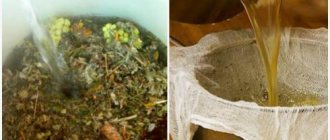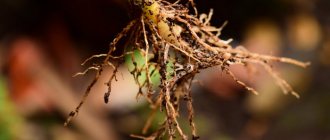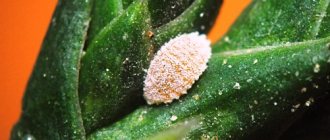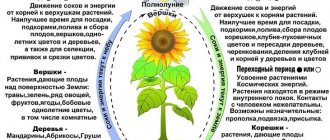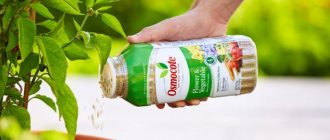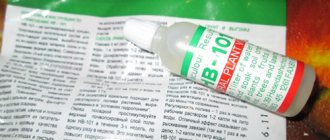Folk remedies for pests and diseases
Many plant products, such as onion skins or water from boiled potatoes, which we usually recycle, can be an excellent flower food. What types of organic matter are suitable for fertilizer. Also, most wild plants can become healers for their indoor relatives. And the benefits of garlic in pest control are legendary!
Important to know: Pests of indoor flowers: photos, signs and methods of control. Garden pests: photos and prevention. Diseases of indoor plants: photos, symptoms, treatment.
When to use soap solution
The areas of application of the product in question are extensive. Soap solution is successfully used when treating plants and shrubs in the following cases:
- when aphids appear;
- to destroy spider mites;
- if a mealybug is detected on the plant;
- to combat butterfly caterpillars.
Thanks to regular use, the manifestations of many diseases are eliminated and the plant immune system is stimulated.
Some of the plants require additional processing. And spring is exactly the time when such therapeutic and preventive treatment should be performed. You can read about the features of spring raspberry care in the next article on our website.
Citrus peels
Dried citrus peels repel many insects! They can be placed in a moth closet, as well as in flower pots to combat midges and fools. The peels of any citrus fruit are suitable for this - lemon, orange, tangerine, lime, grapefruit. Spread them on the surface of the soil, or chop them and sprinkle them on the soil in a flower pot. It is better to do this the next day after watering, or 4-5 days before watering.
To combat more serious pests - aphids, scale insects and mealybugs, you can also spray the citrus peel with an infusion. For this, 100 gr. dry or fresh raw materials, pour a liter of warm water and leave in a dark place for 4 days.
citrus peels and garlic
Garlic and onion
An infusion of garlic will help cope with whiteflies, scale insects, and mites. To do this, pour boiling water over chopped garlic at the rate of 1 head per liter of water. The “potion” steeped for 7 days is used for spraying. For 10 l. Only 50 ml of water is enough. such a solution.
Garlic infusion helps with many “plant” diseases - spotting, rust, late blight. Moreover, garlic can be used together with the husk, or you can infuse only the husk at the rate of 100 grams. husks per 10 l. water (keep for 24 hours).
Onions have a similar effect; their smell repels aphids, thrips, other sucking pests and mites, and is also a preventive measure against bacterial and fungal diseases. Fresh onions are grated or crushed in a blender and filled with water in a 1:1 ratio. The “fragrant” mixture is left in a closed jar for 8 days, then used for spraying at the rate of 20 ml. infusion for 10 l. water.
✿
Green and laundry soap
Pests leave invisible traces, which subsequently become soil for the development of fungal diseases. Therefore, a soap shower is a useful procedure in the initial stages of fighting insects! Using a soft sponge, wipe the leaves and stems of the plant with a soapy solution and then rinse with hot water. A solution of laundry soap in its pure form is used to combat aphids, mealybugs, mites, and scale insects. For this purpose, 200 gr. soap (can be grated) dissolved in 10 liters. clean hot water and use for spraying.
Laundry soap is also used to increase the viscosity of medicinal infusions and insecticides. So that the solution settles on the leaves and is better absorbed, and does not drain from them, rub a little soap into the finished infusion.
Among natural preparations, green soap has received recognition - a herbal remedy based on oils, which can be purchased at any specialized store. The spectrum of its effects includes: aphids, scale insects, mites, scale insects, powdery mildew, rot, spotting, and late blight. Directions for use and dosage are indicated on the packaging. This drug is good because it is completely harmless to people, animals and beneficial insects.
tobacco and laundry soap
Soap solution: an excellent product for treating plants
Today, more and more gardeners are returning to using time-tested natural methods of plant care. And the soap solution, easy to prepare and use, provides reliable protection for many types of shrubs and ornamental plants.
The manufacturing process involves the use of simple and accessible components. Therefore, the cost of such a product is also quite affordable.
Shag tobacco and ash
Tobacco and ash are used to remove gnawing and sucking insects: aphids, mites, thrips, beetles, caterpillars, worms, etc. They also get rid of flower midges. But pure tobacco is suitable for plants, without impurities and flavorings, preferably as strong as possible! Moreover, fresh raw materials will also work – tobacco leaves, or shag leaves, and even tobacco dust. An infusion is made on them: pour hot water (at the rate of 1:10) and leave for a day. The finished solution is diluted with water 2 times, for greater viscosity, laundry soap is added - 40 g. for 10 l. The resulting mixture is thoroughly sprayed onto the plants.
A similar recipe works for wood ash. However, it is worth considering that the raw materials for medicinal ash should be exclusively clean materials - paper, wood. You can lightly sprinkle the soil of potted flowers with dry tobacco and ash. This folk remedy for plant protection repels insects, including midges. Among other things, ash is a valuable fertilizer; the flowery-blog.ru website talked about its use in this article.
Potassium permanganate, furatsilin and soda
Manganese, as a trace element, is necessary for flowers (what other trace elements are important for plants). It improves growth, increases defenses, strengthens the root system! Plants are watered with a weak solution of potassium permanganate, together with the solution they receive a useful element, and soil pests (root scale insects, caterpillars, beetles) receive a dose of poison. At the same time, this procedure disinfects the soil for fungi and bacteria that cause diseases of the root system. However, in order not to burn the roots of the plant, the manganese solution should be made barely pink, literally a few specks per 10 liters. water! It is easier to add a few drops of a pre-diluted manganese solution to the water for irrigation. Flowers are also sprayed with this solution against aphids, mites, and whiteflies.
✿
Infusions and decoctions: celandine, dandelion, horsetail, nettle, wormwood, comfrey
Nettle is an excellent immunomodulator for decorative flowers. This wild-growing medicine can be used as a regular feeding! The infusion is poured under the root and sprayed with it to prevent almost all diseases and pests. To prepare the infusion 700 gr. pour 5 liters of fresh herbs. hot water, cover and leave in a warm place. After a while, the solution will begin to ferment; it must be stirred regularly. Of course, it is easier to prepare such a “potion” at the dacha, or in your own home. After all, the smell is quite pronounced! The fermented mixture (usually on day 5) can be filtered and used. For root feeding, the infusion is diluted 1:10 with water, and for foliar feeding - 1:20.
In the same way, in the summer, an infusion of comfrey, horsetail, or wormwood herbs is prepared. Comfrey infusion can replace complex fertilizer in composition: it is a valuable source of potassium and nitrogen. Wormwood also improves the immunity of flowers and is an excellent help in the fight against bacterial diseases, aphids, leaf-eating and sucking insects. Horsetail is used to prevent diseases and pests. It strengthens plant tissues and increases the immunity of flowers!
horsetail and wormwood
nettle and comfrey
Attention! It is better to spray in the evening to avoid the sun hitting the leaves. Recipes for healthy leafy subcortex.
Such folk remedies for plants can also be used in dry form at the rate of 150 g. dry raw materials per 10 liters. water. Infuse the herb in cold water for 24 hours, then bring to a boil in a water bath. This infusion is not diluted; it is used in its pure form for watering and spraying.
Among plants, celandine and dandelion are also famous for mutual assistance! Infusion of celandine is sprayed or wiped off plants from scale insects, mealybugs and thrips. For this, 100 gr. dry herbs are poured with a liter of boiling water and infused for 2 days. The properties of dandelion are similar, plus it neutralizes ticks! It is better to use fresh raw materials - 50g. leaves and roots pour 1 liter. hot water and leave for 5 hours, after which it can be used for sheet processing.
✿
What to do if pests appear on the plant?
For minor lesions, try to collect the pests by hand, wash them off with water or wipe the leaves with a cotton swab, napkin or soft toothbrush dipped in a soap-alcohol solution.
In more serious cases, use spraying with a soap-alcohol solution and other means (see information on each pest). Repeat the procedures after 1-2 weeks.
How to prepare a soap-alcohol solution
A soap-alcohol solution is used against the following pests : spider mites (in combination with a plant sauna), thrips and aphids (spray 2-3 times).
Mix the following ingredients well until foamy:
- 1 liter of water,
- 1 tbsp. spoon of liquid soap,
- 1 tbsp. spoon of alcohol.
Cover the soil with film to prevent the solution from getting into the soil.
Pour the mixture into a spray bottle and spray the plants on the outside and inside of the leaves. It is most convenient to carry out this procedure in the bathroom.
Place the plant in a bright but not sunny place for 2-3 days. Then rinse it with water at room temperature. If necessary, repeat the procedure after a week.
Fragrant flowers: lavender, gypsophila, nasturtium, mateola, spices, marigold and calendula
There are plants that, when adjacent to other flowers, are able to create a barrier against pests and diseases. These are the so-called phytoncide plants! These include gypsophila, lavender, matiola bicornuum, nasturtium, as well as spicy aromatic herbs - basil, coriander, mint, sage, thyme, lemon balm, even the usual dill and parsley, as well as the previously mentioned wormwood.
Why not grow a small garden, or a fragrant mini-vegetable garden on the balcony? The smell of such plants will repel pests. Thus, once on the balcony, indoor flowers will be protected by natural flavors! And by planting aromatic plants and herbs in the garden plot, you will not only decorate the flowerbed, but also protect the flowers from the invasion of “uninvited guests”. Double benefit!
spices and matthiol
Some plants act not only above the ground, but also in the soil, protecting neighbors from parasites and bacteria. Such universal flowers include calendula and marigolds. By sowing the empty spaces in the flowerbed with them, you will protect the flowers from fungal and viral diseases. By the way, an infusion is also made from marigold flowers, which is successfully used in the fight against pests and diseases! To do this, collect faded marigolds along with the leaves, put them in a saucepan and fill them with hot water 1:1, let them brew for 2 days. The strained infusion can be used for spraying against aphids, mites, whiteflies, thrips, and for the treatment of fungal diseases. It will also be useful for seedlings – against “black leg”.
What harm does aphids cause?
A small yellow, greenish or even black insect likes to feast on the tender leaves of plants, mainly in the warm season. If you look closely at the flowers, the pests can be seen with the naked eye, since the individuals are quite large, the body reaches 2 mm in length. A nuisance for the amateur gardener is the colonial invasion of aphids, a massive destruction of flowering plants.
Having settled on plants, aphids lead a sedentary lifestyle. She sucks the juice from young shoots by piercing the tender parts of the plant with her small proboscis. As a result of the active activity of insects, indoor flowers weaken, do not grow, become diseased and die.
Signs of plant damage by aphids:
- Curled leaves.
- Deformed tops and young shoots.
- The buds curl and fall off.
- Transparent droplets appear on the leaves, similar to honey.
Aphids cause irreparable harm to the plant, because the insect is a carrier of many infections, so affected indoor flowers are exposed to all sorts of diseases.


